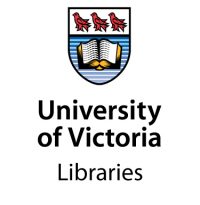This M.A. History thesis details the religious interactions between traditional Chinese culture and Victoria’s mainstream society in the early days of the city.
Chinese Religious Life in Victoria, BC 1858-1930
by Liang Han
Abstract:
Between 1858 and 1930, Victoria’s Chinese immigrants brought their homeland religions to the Canadian city of Victoria BC. They experienced a broad range of challenges as they attempted to fit into the mainstream society. This continual struggle affected their religious lives in particular as they sought to adjust in ways that helped them deal with racial discrimination. As a result, Chinese folk religions, especially those emphasizing ancestral worship, became intertwined with local Chinese associations as a way of strengthening the emotional connections between association members. Some associations broadened their membership by adding ancestral deities or worshiping the deity of sworn brotherhood in a bid to create broader connections among the Chinese men who dominated Victoria’s Chinese community. At the same time, Christians, who practiced the religion of Victoria’s mainstream society, reached out to the Chinese, at first by offering practical language training and later by establishing missions and churches that focused on the Chinese. Many Chinese immigrants welcomed English classes and the social opportunities that churches provided but resisted conversion, as the discrimination they faced in mainstream society had left them sceptical about Christianity, which was seen as closely linked to the dominant Western culture. However, Chinese attitudes towards Christianity became more favorable after the 1910s, when the patriotism of Chinese immigrants led them to support revolutionary leader Sun Yat-sen and his new Chinese government, which promoted Christianity as a symbol of modernity. In general, the Chinese in Victoria were not especially enthusiastic about religion, whether Chinese folk religion or Christianity, although women were generally more interested in religion than men. Although many Chinese pragmatically sought comfort and assistance from both religions, they followed Confucian orthodoxy in focusing primarily on daily life rather than religious life. At the same time, over the decades between 1858 and 1930 both Chinese folk religion and Christianity affected the Chinese community as this community adopted a mixture of Western and Eastern cultures, including religious elements from both cultures.
To read more, visit UVicSpace https://dspace.library.uvic.ca:8443/handle/1828/11071
*UVic’s open access repository, UVicspace, makes worldwide knowledge mobilization possible. Through this platform, researchers at any institution have access to dissertations (and theses and graduate projects) published by our graduate students. This also makes works available to the interested layperson, who may be engaged in learning more about the research being done at UVic, with no paywall. UVic’s graduate students are doing valuable research every day – but sometimes it goes unsung. Our goal with this series is to shine a light on our students by featuring excellence, one achievement at a time.
The UVic LIbraries ePublishing Services Team
